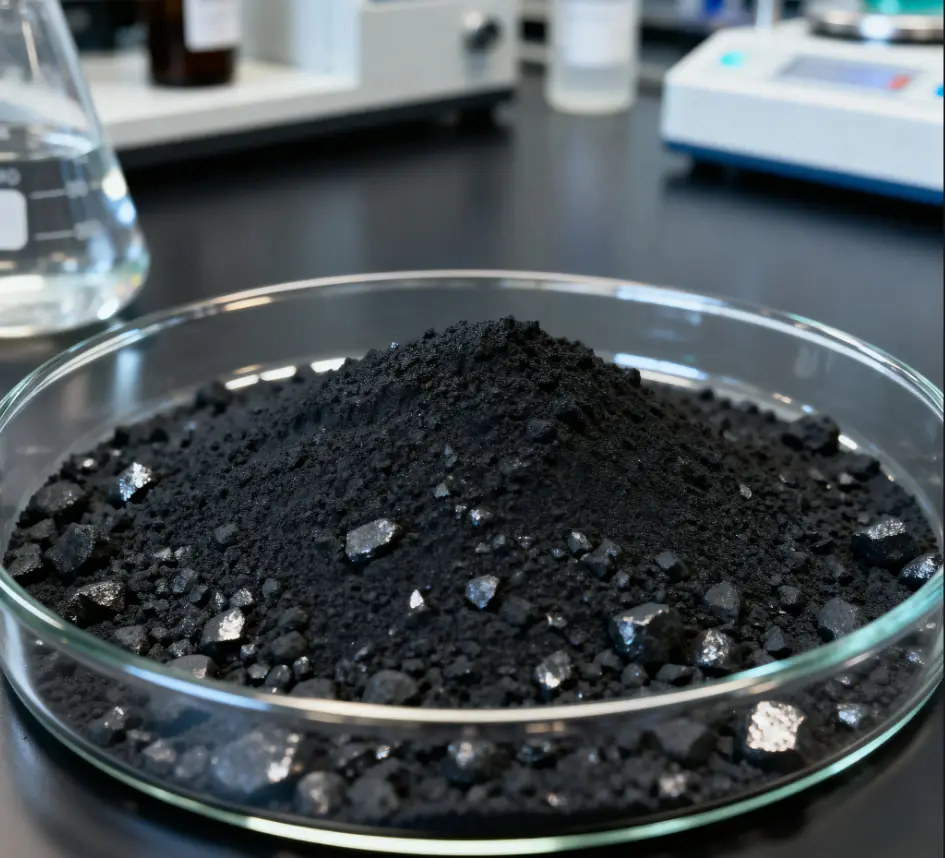Iron pyrite, also known as FeS₂ or fool’s gold, is a mineral with diverse industrial applications. However, due to its flammable nature and potential for oxidation, storing and transporting iron pyrite powder requires careful consideration. This article provides essential guidelines for safe storage, transportation, and handling to reduce the risks associated with iron pyrite powder.
Table of Contents
Understanding Iron Pyrite Powder
Iron pyrite powder is a fine, yellowish metallic powder that contains iron and sulfur. It's essential in industries like metallurgy, chemicals, and even in energy production. However, due to its highly reactive properties, safe handling and storage practices are critical.
- Chemical formula: FeS₂
- Appearance: Yellowish metallic powder
- Flammability: Can spontaneously ignite in certain conditions
- Hazards: Oxidation, dust explosion, and environmental concerns
Understanding these characteristics helps mitigate the risks during storage and transportation.
Risks Associated with Iron Pyrite Powder
Handling iron pyrite powder poses several risks that can compromise safety and environmental health. The primary risks include:
1. Oxidation and Spontaneous Combustion
Iron pyrite powder reacts with oxygen in the air, potentially causing self-heating and spontaneous combustion. In poorly ventilated areas or hot environments, this chemical reaction could lead to fires.
2. Dust Explosion Hazard
Iron pyrite is highly flammable in powder form. When dust particles become suspended in the air, they can ignite and cause catastrophic explosions if not properly controlled.
3. Environmental Impact
If improperly stored or disposed of, iron pyrite can release sulfur dioxide, contributing to air pollution and environmental contamination.
Best Practices for Storage of Iron Pyrite Powder
1. Controlled Storage Environment
To minimize risks, always store iron pyrite powder in cool, dry, and well-ventilated areas. This reduces the potential for oxidation and spontaneous combustion. Keeping the humidity below 50% is crucial to prevent moisture-induced reactions.
2. Use of Appropriate Containers
Store iron pyrite powder in airtight containers made of non-reactive materials like high-density polyethylene (HDPE) or sealed metal drums. Containers should be clearly labeled with appropriate hazard warnings, including the chemical name and safety instructions.
3. Segregation of Hazardous Materials
Never store iron pyrite near oxidizing agents, acids, or strong bases. Additionally, ensure that it is kept away from other flammable materials to minimize the risk of fire.
4. Fire Safety Measures
Install fire extinguishers suitable for chemical fires, particularly Class D extinguishers. Ensure storage areas are fireproof and incorporate spark-free equipment to prevent ignition from static electricity.
Best Practices for Transportation of Iron Pyrite Powder
1. Packaging for Safe Transport
For transporting iron pyrite powder, use UN-approved containers, sealed bulk bags (FIBC), or airtight metal drums. Ensure packaging is moisture-resistant and includes moisture-absorbing materials such as silica gel to prevent humidity buildup.
2. Regulatory Compliance
Comply with local and international transportation regulations, including IMDG (International Maritime Dangerous Goods) and ADR/RID (European Land Transport). Properly classify iron pyrite powder as a combustible solid and ensure all necessary Safety Data Sheets (SDS) are available.
3. Proper Loading and Handling
When loading and unloading iron pyrite powder, use mechanical equipment instead of manual handling to reduce the risk of spills and dust creation. Workers should wear personal protective equipment (PPE), including gloves, masks, and goggles, to minimize exposure.
4. Transportation Conditions
During transport, ensure that containers are secured and that the environment is temperature-controlled. This helps reduce the risk of oxidation and self-heating. Transport in well-ventilated vehicles to prevent the buildup of hazardous gases.
Monitoring and Maintenance
For effective long-term storage and transportation of iron pyrite powder, continuous monitoring is essential. Regularly inspect the integrity of the containers and check for signs of moisture buildup or oxidation.
- Temperature and humidity control in storage facilities
- Dust control systems, such as anti-static flooring
- Routine inspections for signs of wear and tear
Environmental and Safety Considerations
Handling iron pyrite powder can have significant environmental and safety impacts if not done correctly. Be sure to have protocols in place for spill containment, clean-up, and proper disposal.
- Collect and neutralize any spillage immediately to prevent further reactions
- Train workers on how to handle emergencies, including fire or explosion incidents
- Properly dispose of sulfur waste to avoid environmental contamination
Conclusion
The safe storage and transportation of iron pyrite powder are vital to reducing risks and ensuring the smooth operation of industries relying on this material. By adhering to safety guidelines, utilizing the correct containers, and maintaining regulatory compliance, companies can ensure the safe handling of this potentially hazardous substance.
Whether you are dealing with iron pyrite powder in a small-scale operation or a large industrial setting, following best practices is essential to protect both people and the environment.

